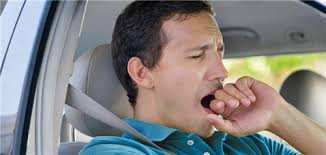ROAD SAFETY and breakdown organisation GEM Motoring Assist is warning drivers to be watchful for the symptoms of fatigue and the risks of being behind the wheel when tired.
 The warning comes at the start of the 2021 summer holiday season where staycations are likely to prove more popular than ever, and families will be heading off to destinations that could be many hours’ drive away.
The warning comes at the start of the 2021 summer holiday season where staycations are likely to prove more popular than ever, and families will be heading off to destinations that could be many hours’ drive away.
GEM chief executive Neil Worth commented: “At its most basic, fatigue reduces drivers’ ability to concentrate and focus on what is going around them. Safety and hazard information that’s usually interpreted immediately by a driver who is fully alert can take the fatigued driver a lot longer to get to grips with.
“There’s a lot more to understanding driver fatigue than simply nodding off at the wheel. Falling asleep is of course a form of fatigue. However, it’s the most extreme form, occurring only after a number of other, easily recognisable symptoms have been ignored.
“Your driving can be affected by fatigue long before you are so tired that you are in serious danger of falling asleep at the wheel.”
“Drivers may also find – especially on a long, dull motorway journey – that they are drifting out of their lane, changing speed more frequently and for no good reason. They may fidget in their seat in an attempt to wake up a bit. If you experience any or all of these symptoms, you must stop and rest.”
Fatigue is reckoned to be the cause of a large number of single-vehicle crashes involving a car hitting a tree or other rigid object, and severe head-on collisions. Researchers believe fatigue is involved in between 10% and 25% of all crashes and it accounts for around 20% of all serious collisions on motorways.
Driver fatigue becomes even more of a risk when it combines with other factors, such as speeding and alcohol impairment. Drink-driving is particularly dangerous in combination with fatigue, because alcohol can significantly affect a driver’s alertness long before he or she reaches the legal drink-drive limit. Any amount of alcohol can combine with fatigue to affect driving.
Advice from GEM for minimising the dangers of fatigue while driving is as follows:
-
Make sure you get plenty of sleep before a long journey. Plan to drive during times of the day when you’re normally awake, don’t push yourself to complete a long journey all in one go. Schedule a night-stop somewhere rather than ‘pressing on’ regardless.
-
Avoid driving during times when you know you’ll be at your most drowsy. It makes sense to take a break after lunch and to be asleep between midnight and 6 am.
-
If you’re on a long journey, the Highway Code advises a 15-minute break every two hours as a minimum. Take more frequent breaks if you need to. Make sure they’re proper breaks, too. Get out of the car, have some fresh air, stretch or exercise a little. If you’re tired, then take a nap if it’s safe.
-
Don’t delay taking a nap. A short sleep of 15 to 30 minutes can be helpful, but if you sleep more than 40 minutes you will find it hard to wake up and be alert – at least for 15 minutes after waking.
-
Avoid heavy meals on journeys, especially at lunchtime, as these can exacerbate sleepiness in the afternoon.
-
Drinks with a caffeine content can help you stay alert, but their effects are not instant. Research shows that taking a caffeinated drink, followed by a 20-minute nap, appears to be the best short-term measure for combating fatigue.
Follow GEM on Twitter @MotoringAssist for the latest industry news.
